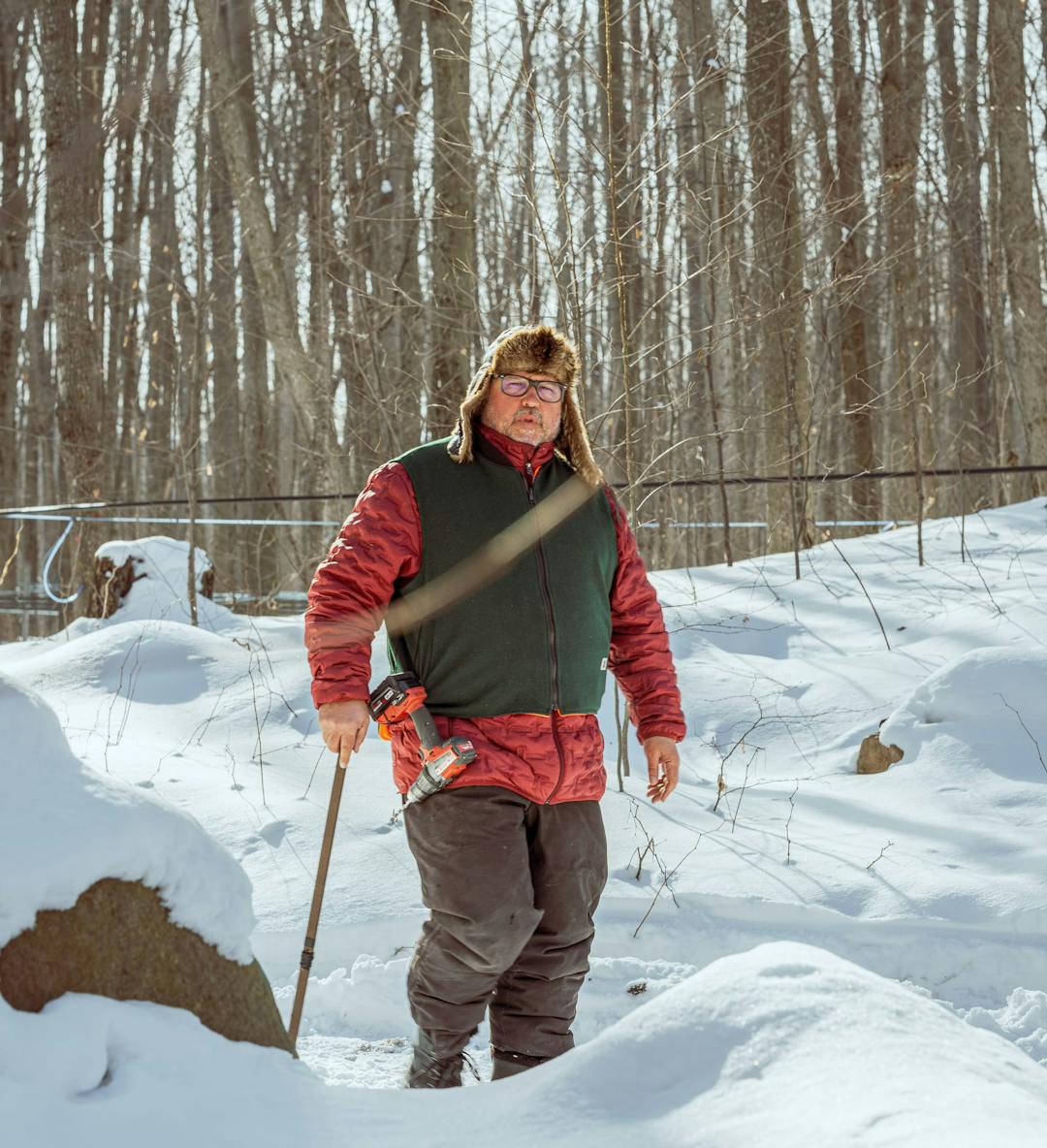Sucrerie de la Montagne & Cabane d’à Coté: Unpredictable seasons to come for maple syrup in Quebec
With the early start in 2024, producers superseded previous productions to meet demand, but the future of the industry may not always stay this bright forever.
 Canadian chef, author and television personality Martin Picard, the man behind some of the greatest sugar shacks outside Montreal, Cabane À Sucre Au Pied De Cochon & Cabane d’à Coté. | Photograph: Scott Usheroff / @cravingcurator
Canadian chef, author and television personality Martin Picard, the man behind some of the greatest sugar shacks outside Montreal, Cabane À Sucre Au Pied De Cochon & Cabane d’à Coté. | Photograph: Scott Usheroff / @cravingcuratorWinter 2024 was one to forget for most of Quebec's winter traditions. El Niño’s heat brought an premature end to winter, but an unusual start to the maple syrup season in Quebec, with producers in the southern half of the province starting around 2 weeks earlier than expected.


Photograph: Sucrerie de la Montagne
“We didn’t know what it would be like,” said Pierre Faucher of Sucrerie de la Montagne in Rigaud back in February. Pointing to the date “29/02/24” marked into the wall, Faucher said “it’s a secret until it happens.”
That date marked the first boiling day of the year, and above that one was a line of dates all from the beginning to late March. Sporting his iconic plaid shirt and big white beard, Faucher explained that this was the earliest start to the season he had ever seen in all of his 46 years in the business.


Photograph: Sucrerie de la Montagne
But Faucher was not alone, Au Pied du Cochon’s Cabane d’à Coté in Mirabel faced a similar season. “We started 2-3 weeks before our expectations and never stopped at all,” said Vincent Dion-Lavallée, manager and head chef at Cabane d’à Coté. “Normally we boil 80-100 barrels, but now we’re at 105-110 barrels.”



Photograph: Scott Usheroff / @cravingcurator
Changing winds
Maple syrup relies on the freezing and warming temperatures in the spring that get the sap flowing through the tree to start producing leaves for the summer foliage. Normally most maple syrup producers in Quebec would tap their trees in the first week of March, but this year’s mild February kickstarted the season earlier than expected.

A strong El Niño weather pattern caused by trade winds changing their direction blew warm air from the Pacific all the way east to Montreal. The weather pattern happens around every 7 years, lasting 9-12 months.
“This El Niño was considered to be very strong,” said Dr. Djordje Romanic, a climate scientist from McGill’s atmospheric and oceanic research department. But, Romanic adds, “El Niño is not a consequence of climate change.” He said that there is not enough research as of yet to tie this El Niño’s intensity to climate change.


Photograph: Sucrerie de la Montagne
This season: A saving grace?
According to Joel Vaudeville of the Quebec Maple Syrup Producers (QMSP), this season’s early start saved the world's largest producer.
Quebec maple syrup producers that produce over a certain amount have to sell it through the federation, and with a series of bad years, the reserve was dwindling—going into 2024, the federation had not seen levels this low since 2008.
Quebec produces around 70% of the maple syrup produced globally and a depletion of the maple syrup reserves could have spelled disaster. But according to Vaudeville, the extremely long season has replenished the reserve back into normal levels.


Photograph: Scott Usheroff / @cravingcurator
It is uncertain what our maple syrup seasons to come will look like. But we can be certain that the seasons will become more unpredictable. With climate change potentially causing frequent freak weather events, there is only so much maple trees can take. For example, last year's ice storm killed production across the province because fallen trees had damaged the tree-to-tree tubing that connects all the tapped trees.


Photograph: Scott Usheroff / @cravingcurator
“There are always variables when it comes to maple water collection,” said Stéphan Faucher, Pierre Faucher’s son. Having grown up his entire life at Sucrerie de la Montagne, Stéphan has seen all 46 years of its existence. He’s seen a lot in his years, but you can never count on the seasons being the same every year.


Pierre Faucher of Sucrerie de la Montagne with his son Stéphan Faucher (left) and another day at the shack (right). Photograph: Sucrerie de la Montagne
Stronger cabane à sucre culture than ever
“We had a lot more people from the States and Toronto,” said Dion-Lavallée.
His restaurant Cabane d’a Coté has seen a huge influx in customers from outside of Quebec this year. Dion-Lavallée thinks the change might be due to an episode of ‘Somebody Feed Phil' that featured Cabane À Sucre Au Pied De Cochon, but it is still not certain why. Even with the change in clientele, maple syrup consumption is still the same.
“We use almost 350-400 liters of maple syrup a week,” Vincent adds.


Vincent Dion-Lavallée, manager and head chef at Cabane d’à Coté. | Photograph: Scott Usheroff / @cravingcurator
“We host about 25,000 visitors over February, March and April over the three months,” said Stéphan Faucher as 300 kids from schools around Montreal ate in the main hall. He explained that there hasn’t been much of a change in demand, and Sucrerie de la Montagne is still as busy as ever asseasons’ production fluctuates. It is still the same faces year after year adhering to tradition.

As climate change and external forces alter the already ever fluctuating industry it is unclear to see the certainty in the future of production. Even the QMSP do not know what is in store for the industry as the climate warms. But as Quebec’s other winter activities like skiing, ice fishing and pond hockey suffer, maple syrup seems to be the most stable of them all.

Make plans for Cabane d’a Coté year round, or at Sucrerie de la Montagne before the 2024 season ends.

